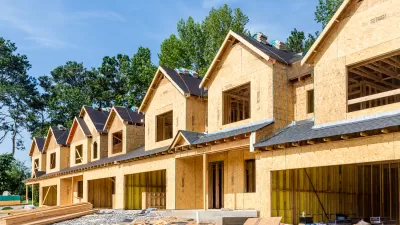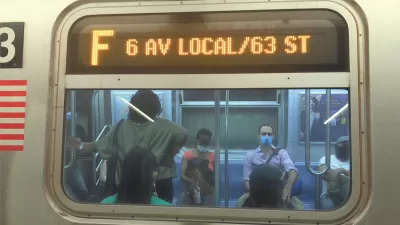U.S. transit agencies are hemorrhaging money as the majority of riders avoid trains and buses. People still need public transit, and public transit needs help to weather the storm.

"The American Public Transportation Association (APTA) is urging Congress to provide an additional $23.8 billion in emergency funds to support public transit across the country," reports Cailin Crowe.
The $2 trillion CARES Act, approved by Congress in late March, included $25 billion in funding for beleaguered transit agencies, but transit agencies are still in need as ridership revenues stay at historic lows into the third month of the public health crisis. The advocacy and think tank organization TransitCenter spent much of April raising awareness about the inadequacy of the initial federal support for public transit.
In March, TransitCenter estimated the potential budget shortfall for U.S. public transit agencies somewhere between $26 billion and $40 billion every year that the coronavirus devastates public transit ridership in the country. An independent economic analysis by EBP US, Inc. produced the $23.8 billion figure used in the APTA's lobbying efforts.
FULL STORY: APTA seeks extra $24B to support agencies 'hemorrhaging money'

Pennsylvania Mall Conversion Bill Passes House
If passed, the bill would promote the adaptive reuse of defunct commercial buildings.

Planning for Accessibility: Proximity is More Important than Mobility
Accessibility-based planning minimizes the distance that people must travel to reach desired services and activities. Measured this way, increased density can provide more total benefits than increased speeds.

Fair Housing Cannot Take a Back Seat to ‘Build, Baby, Build’
If we overlook fair housing principles in the plan to build US housing back better, we risk ending up right back where we started.

LA Metro Board Approves New 710 Freeway Plan
The newest plan for the 710 corridor claims it will not displace any residents.

Austin’s Proposed EV Charging Rules Regulate Station Locations, Size
City planners say the new rules would ensure an efficient distribution of charging infrastructure across the city and prevent an overconcentration in residential areas.

Making California State Parks More Climate-Resilient
A recently released report offers recommendations for keeping state parks healthy and robust, including acquiring additional land for conservation and recreation.
City of Costa Mesa
Licking County
Barrett Planning Group LLC
HUD's Office of Policy Development and Research
Mpact Transit + Community
HUD's Office of Policy Development and Research
Tufts University, Department of Urban and Environmental Policy & Planning
City of Universal City TX
ULI Northwest Arkansas
Urban Design for Planners 1: Software Tools
This six-course series explores essential urban design concepts using open source software and equips planners with the tools they need to participate fully in the urban design process.
Planning for Universal Design
Learn the tools for implementing Universal Design in planning regulations.


























